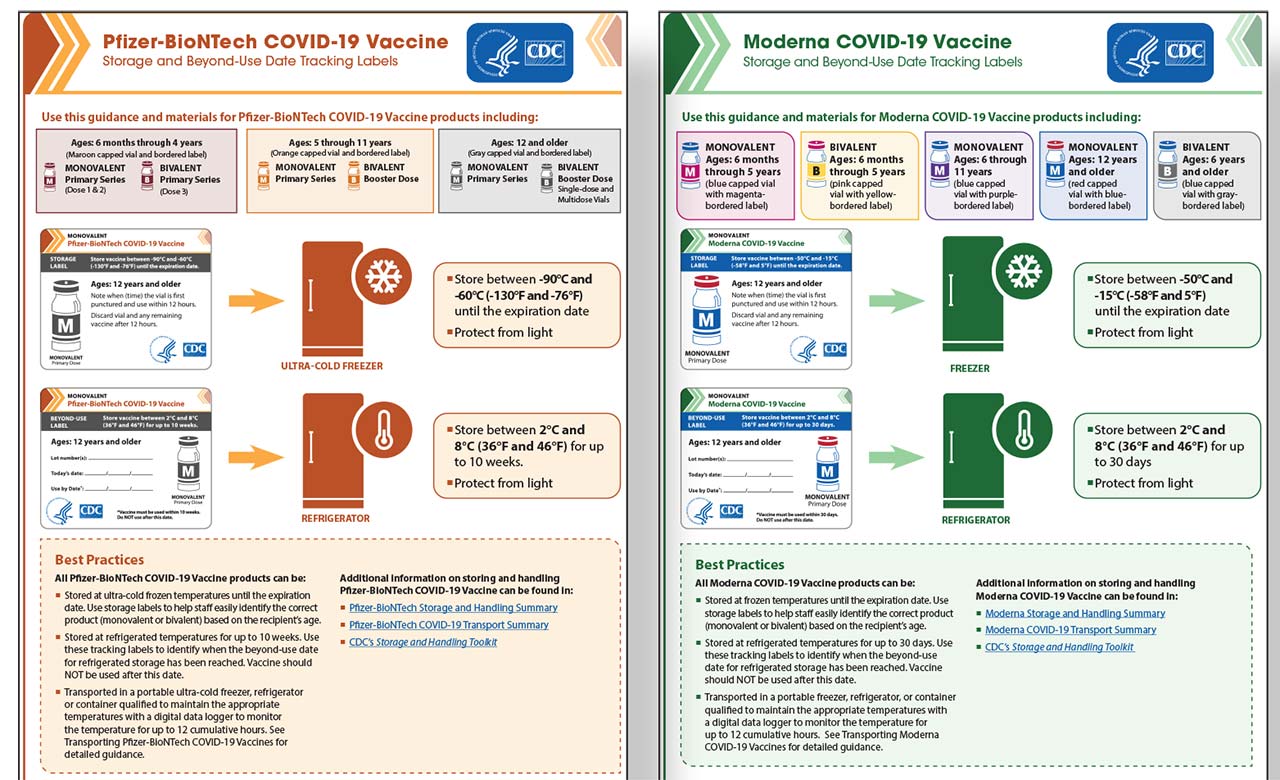Anonym
1844
Challenges remain with COVID-19 vaccine labeling
Johanna Taylor Katroscik, PharmD
The first COVID-19 vaccines gained FDA EUA status in late 2020, but as new vaccines have emerged and some FDA EUAs have changed to approvals, health care personnel have had to stay up to date in an ever-changing environment.
This past fall, the Institute for Safe Medication Practices (ISMP) and CDC’s Advisory Committee on Immunization Practices identified some potentially serious issues with the labeling of COVID-19 vaccines—issues they were concerned may lead to a delay in vaccine administration or even incorrect administration of the vaccines to patients.

However, CDC released several pages of helpful information regarding both the Pfizer–BioNTech and Moderna COVID-19 vaccines on their website in December 2022. The CDC pages include color-coded guides for which vaccines should be given to which age group, information about proper storage and transportation, and links for more in-depth information as well. The page also provides storage and beyond-use-date templates that can be used by pharmacies to help keep their vaccines organized.
Cause for concern
Both Pfizer–BioNTech and Moderna have gained new authorizations for their COVID-19 vaccines over the past 2 years. Unfortunately, with these new authorizations have also come steep learning curves for vaccine administrators. These COVID-19 vaccines were initially authorized only for use in patients 18 years and older and the big differences had to do with administration timelines and proper storage. However, as more age groups have received the official green light for the vaccines and as bivalent ones have become available, there is now more confusion than ever about giving the right dose to the right person at the right time.
In the fall of 2022, concerns were raised about the labeling of both Pfizer–BioNTech and Moderna vaccines—specifically that the labels of the monovalent and bivalent vaccines look very similar and could easily be confused with each other.
For the Moderna vaccines, the labels are very similar for both the monovalent vaccine and the bivalent vaccine. Both vials have light blue caps, making them more difficult to differentiate from one another, leading to potential administration errors. Another key concern with the Moderna vaccines is that the vaccines authorized for use in children aged 6–11 years have a label that reads ‘for booster doses only’ even though the vaccine is meant for the primary dose for this age group.
With the Pfizer–BioNTech vaccines, the main concern is that the labels for all vaccines look very similar and the caps for both monovalent and bivalent doses are the same within age groups—making it potentially easy for health care personnel preparing and giving the vaccine to administer the incorrect vaccine.
ISMP gives key recommendations to help prevent age-related vaccine errors
ISMP offers a number of recommendations to help prevent age-related vaccine errors from occurring. Several key recommendations include utilizing appropriate technology for vaccine administration; clear and easy to understand vaccine storage that separates any potential look-alike and sound-alike vaccines from one another; proper vaccine documentation; and engaging with the patient and/or caregiver to ensure that the correct vaccine is being given to the correct patient. ■
CDC resources for vaccines
Pfizer:
apha.us/CDCPfizerVaccine
Moderna:
apha.us/CDCModernaVaccine